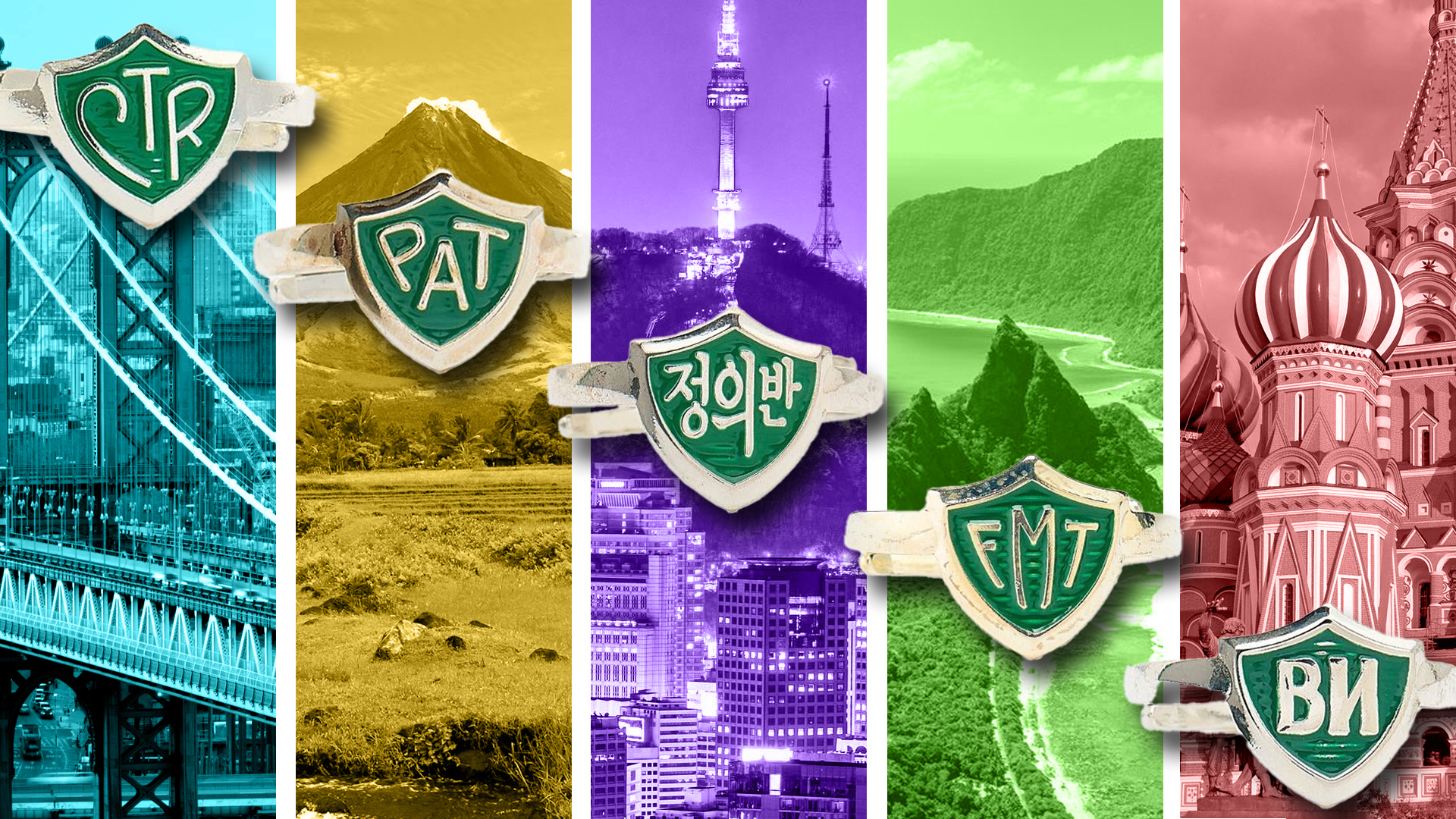It doesn’t matter if you recognize this language or not (it’s Thai)—if you grew up going to Primary, you probably already know exactly what the ring says.

The phrase “Choose the Right” is a familiar maxim in Latter-day Saint teaching, and its abbreviation, “CTR,” has become firmly rooted in Latter-day Saint culture. With its iconic green shield and silver letters, the CTR ring is instantly recognizable. You might own one yourself, or, if not, you probably did at some point.
While jewelry can be worn simply for fashion, rings often serve a deeper symbolic purpose. Wedding bands, Masonic rings, and religious rings remind the wearer of what matters most, or quietly signal important information to others. So how did the CTR ring rise to such popularity among members of the Church?
This is the story of how this cultural icon came to be, and why it continues to endure.
The Origins of “Choose the Right”
You might be surprised to learn that the phrase “Choose the Right” does not appear in any scripture. Its first recorded use in Latter-day Saint history appears to come from a speech by Brigham Young, but its lasting influence traces back to a man named Joseph L. Townsend.
Townsend, a convert to the Church in the late 19th century, was a musician who composed several well-known hymns—among them “Hope of Israel,” “The Iron Rod,” and “The Day Dawn Is Breaking.” He also wrote “Choose the Right,” a hymn that repeats the phrase 14 times throughout its verses.
Although the exact date of its composition is unclear, the hymn was published in a Sunday School hymnbook by 1909. From there, the phrase “Choose the Right” took root in Latter-day Saint culture and soon became widely used.
CTR: A Badge of Belief
In the 1960s, the Primary General Board began developing a new curriculum for children. With cultural shifts placing new emphasis on teaching morality to younger generations, Naomi Randall—a committee member—suggested giving children a “badge of belief” to help them remember what they learned at church.
The committee settled on “Choose the Right” as the guiding phrase, with CTR as the acronym. (An alternative—RC for “Right Choice”—was briefly considered, but rejected since it could also stand for “Roman Catholic” or even “RC Cola.”)
The committee chose a shield as the symbol, representing protection and safety, and colored it green to symbolize the evergreen tree—steady and unchanging through every season.
By 1970, the design was finalized. That same year, then-Elder Gordon B. Hinckley announced that every Primary child ages 6–7 would receive a CTR ring as part of the new curriculum. Coy Miles, owner of a Salt Lake City jewelry company, was commissioned to produce them.
Who Really Designed the CTR Ring?
You might be surprised to learn that there is some controversy over who actually came up with the CTR concept. Committee member Helen Alldredge, according to her daughter, helped coin the phrase “Choose the Right” and even sketched the CTR logo. However, a 2001 Deseret News article identifies Joel Izatt as the designer.
Coy Miles also claimed to have been the creative mind behind the design in its early stages, saying that Izatt created the logo under his direction—a detail Izatt himself later confirmed in the Salt Lake Tribune.
Miles further insisted that the idea of putting the logo on a ring was his. Yet Lurene Wilkinson, in whose living room the committee met, recalled that it was her suggestion, inspired by a ring she had once given her daughter. Another committee member, chair Norma Nichols, recalling the decision, explained that “back then boys didn’t wear necklaces and earrings, so a ring seemed like a good idea.” In the end, the design may simply have been the group’s logical conclusion.
Whoever first proposed it, the idea proved to be a brilliant one. The CTR ring quickly became a sensation, expanding beyond the original 6- and 7-year-olds to include younger Primary classes as well. Committee member Ruth Clinger later reflected, “We had no idea it would turn into what it’s become.”
The CTR Ring Today
It’s been 55 years since the CTR ring was first introduced, and it remains as popular as ever. Today, rings are available in nearly thirty languages on the Church’s website—and in even more through independent vendors.
Exact sales numbers are hard to pin down, but a 2005 report noted that the Church’s Distribution Services had already distributed over half a million CTR rings. That figure doesn’t include Deseret Book sales or private jewelers (for example, in 1996 Ring Masters sold almost 400,000 CTR rings, generating $2.5 million in sales).
CTR rings have also become increasingly customizable. Deseret Book offers designs featuring butterflies, dragonflies, dinosaurs, footballs, and flowers. Other jewelers produce CTR rings in silver, gold, diamond, or even glow-in-the-dark. CTR rings can even be purchased in the made-up languages of Klingon, Mandalorian, and Elvish.
The acronym “CTR” has expanded in meaning as well. A New Era article from the 2000s suggested that CTR can also stand for Christ the Redeemer, reminding us that remembering Him helps us choose the right. President Russell M. Nelson later proposed another adult-focused interpretation: "Current Temple Recommend."
Today, the CTR ring represents far more than a simple reminder to make good choices. It has become a cultural identifier: a recognizable symbol of Latter-day Saint faith. Much like the cross serves for other Christians, the CTR ring is an outward expression of an inward desire to follow Christ.
So if you’ve thought of CTR rings as something mainly for children, it’s worth remembering that they’ve become a lasting part of Latter-day Saint culture and history—and they continue to hold meaning for many today.
If you enjoyed this read, check out our blog post on the evolution of the Church logo. Like Mormonr? Sign up for our newsletter to receive updates on the latest blog posts, Q&As, and Mormonr projects.


